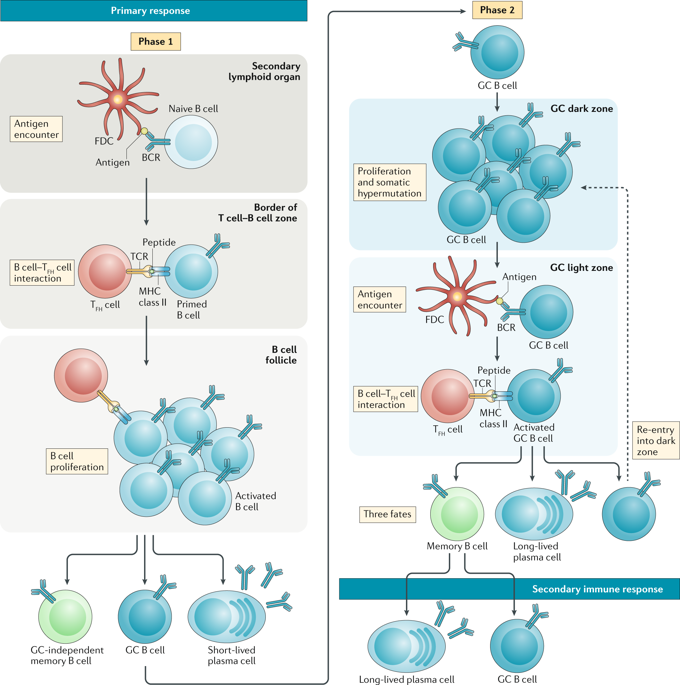当前位置:
X-MOL 学术
›
Nat. Rev. Immunol.
›
论文详情
Our official English website, www.x-mol.net, welcomes your
feedback! (Note: you will need to create a separate account there.)
B cell memory: building two walls of protection against pathogens.
Nature Reviews Immunology ( IF 67.7 ) Pub Date : 2019-12-13 , DOI: 10.1038/s41577-019-0244-2 Munir Akkaya 1 , Kihyuck Kwak 1 , Susan K Pierce 1
Nature Reviews Immunology ( IF 67.7 ) Pub Date : 2019-12-13 , DOI: 10.1038/s41577-019-0244-2 Munir Akkaya 1 , Kihyuck Kwak 1 , Susan K Pierce 1
Affiliation

|
Surviving a single infection often results in lifelong immunity to the infecting pathogen. Such protection is mediated, in large part, by two main B cell memory 'walls' - namely, long-lived plasma cells and memory B cells. The cellular and molecular processes that drive the production of long-lived plasma cells and memory B cells are subjects of intensive research and have important implications for global health. Indeed, although nearly all vaccines in use today depend on their ability to induce B cell memory, we have not yet succeeded in developing vaccines for some of the world's most deadly diseases, including AIDS and malaria. Here, we describe the two-phase process by which antigen drives the generation of long-lived plasma cells and memory B cells and highlight the challenges for successful vaccine development in each phase.
中文翻译:

B细胞记忆:建立两道防御病原体的墙。
在单个感染中幸存下来通常会导致对感染病原体的终生免疫。这种保护在很大程度上由两个主要的B细胞记忆“壁”(即长寿浆细胞和记忆B细胞)介导。驱动长寿浆细胞和记忆B细胞产生的细胞和分子过程是深入研究的主题,对全球健康具有重要意义。确实,尽管当今使用的几乎所有疫苗都取决于它们诱导B细胞记忆的能力,但我们尚未成功开发出针对某些世界上最致命的疾病(包括艾滋病和疟疾)的疫苗。在这里,我们描述了抗原驱动长寿命浆细胞和记忆B细胞生成的两阶段过程,并着重指出了成功开发每个阶段疫苗的挑战。
更新日期:2019-12-13
中文翻译:

B细胞记忆:建立两道防御病原体的墙。
在单个感染中幸存下来通常会导致对感染病原体的终生免疫。这种保护在很大程度上由两个主要的B细胞记忆“壁”(即长寿浆细胞和记忆B细胞)介导。驱动长寿浆细胞和记忆B细胞产生的细胞和分子过程是深入研究的主题,对全球健康具有重要意义。确实,尽管当今使用的几乎所有疫苗都取决于它们诱导B细胞记忆的能力,但我们尚未成功开发出针对某些世界上最致命的疾病(包括艾滋病和疟疾)的疫苗。在这里,我们描述了抗原驱动长寿命浆细胞和记忆B细胞生成的两阶段过程,并着重指出了成功开发每个阶段疫苗的挑战。




















































 京公网安备 11010802027423号
京公网安备 11010802027423号